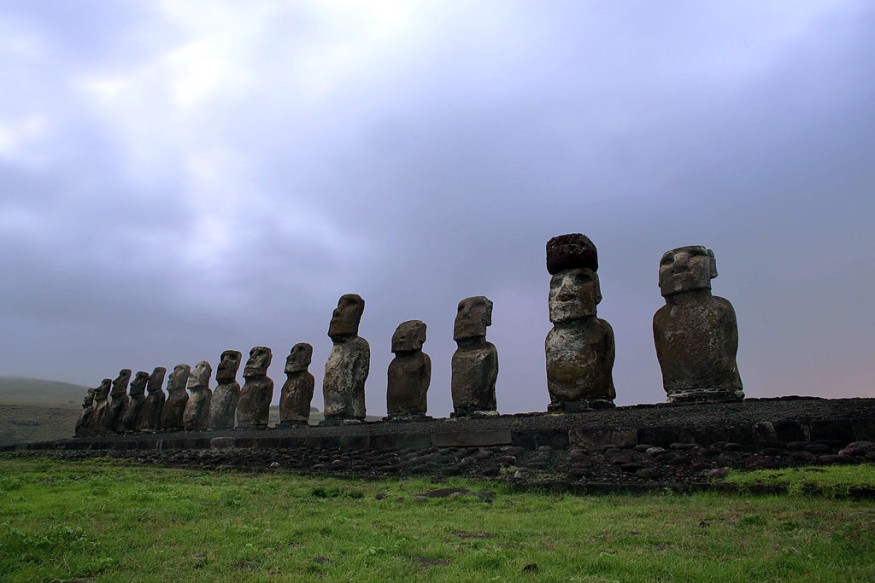Easter Island: New Moai Statue Found in Dry Lake Bed in Chile's Rapa Nui

Archaeologists on Rapa Nui, popularly known as Easter Island, have discovered a new moai statue in a dried-up lakebed.
More ancient relics may be uncovered at the Rano Raraku site, including moai statues and tools. The age of the Moai will also be determined using radiocarbon analysis.
"We think we know all the moai, but then a new one turns up," says Terry Hunt, an archaeologist at the University of Arizona, to Angeline Jane Bernabe, Faryn Shiro, Erin Brady, and Robyn Weil of "Good Morning America."
"When there's one moai in the lake, there's probably more," he added.
The new Moai is far smaller than roughly a thousand previous statues on the island, which may reach 33 feet and weigh 80 tons, according to Smithsonian Magazine.
For Hunt, they stand in for the "deified ancestors" of the Easter Island's inhabitants.
READ NEXT : Chile Easter Island Fire
The Discovery of the New Moai Statue Is Important to Rapa Nui Community
Moai statues were made by the Rapa Nui islanders between 1300 and 1600 CE out of cooled volcanic ash.
Several statues are turned inward, away from the ocean, on stone platforms called ahu.
The monoliths' heads are the only components shown above the ground; their bodies are hidden beneath.
The pukao, or red stones, seen atop their heads, are believed to symbolize a hat or a topknot of hair.
The island's national park is managed by the indigenous group Ma'u Henua. A valuable cultural artifact, the discovery was said to have great significance for the indigenous Rapa Nui people.
"The moai are important because they represent the history of the Rapa Nui people," said Hunt, stating that those people were the revered ancestors of the islanders. Aside from being instantly recognizable everywhere in the world, they also symbolize the island's rich archaeological history.
This sculpture was discovered when the surrounding water dried up because of climate change. More previously unknown Moai may emerge if the current drought continues.
Hunt explained that more Moai may be buried in the lakebed sediments but are obscured by vegetation due to the reeds' height.
They also look for the instruments used to create the Moai sculptures and other texts.
The most isolated island on Earth is a World Heritage Site recognized by UNESCO.
A lot of people visit Easter Island to see the Moai statues, Art News noted.
However, the statues were destroyed in the same devastating volcanic explosion that leveled more than 247 square kilometers of the island a year ago.
Researchers Will Conduct More Studies on Moai Statue On Easter Island
Radiocarbon dating of organic materials found near the monument would help researchers determine when it was carved, according to Salvador Atan Hito, vice president of the Ma'u Henua Indigenous Community.
Considering the recent onslaught of bad news regarding Easter Island's moai statues and their preservation, this latest discovery comes as a welcome relief.
Several of the sculptures were completely burnt in a suspected arson attack in October, and in 2020, a resident caused "incalculable damage" to one of the revered monuments by driving a pickup truck into it.
Meanwhile, authorities from Rapa Nui have requested the return of two moai statues currently on display at the British Museum.
This article is owned by Latin Post.
Written by: Bert Hoover
WATCH: New Moai statue found on Easter Island in evaporating lake - From Good Morning America
Subscribe to Latin Post!
Sign up for our free newsletter for the Latest coverage!
© 2025 Latin Post. All rights reserved. Do not reproduce without permission.














